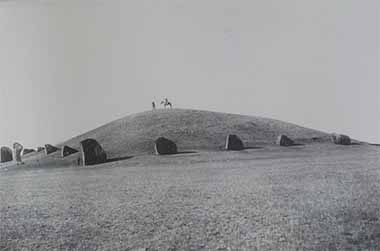Strange Burial Practice of Scythian Nomad Tribes of Warriors

Tattoos for the dead
Coming from Siberia, hordes of Scythians settled on the edge of the Black Sea in the 7th century, ravaged Assyria and went as far as Egypt. This strange people of nomads goldsmith warriors practice mysterious and cruel funeral rites as integral part of their culture.
Terrible and lavish burials
The funerals of a Scythian sovereign give rise to ceremonies that last several days. The body is embalmed and transported from tribe to tribe. All those who come to see him cut off a piece of their own ear and practice self-mutilation as a sign of mourning. Then a grave is dug, and burial takes place. The Greek historian Herodotus, in the fifth century BC, attended one of them: “They deposit the corpse in the funeral chamber, on a bed of greenery, plant posts in the ground on each side of the body, place pieces of wood across them, which they cover with reed mats; in the space left free of the room, they bury, after having strangled them, one of the king's concubines, his cupbearer, a cook, a groom, a valet, a messenger, horses, a chosen part of all his other properties and gold cups. That done, everyone set out to raise a large mound, competing zealously to make it as large as possible. ” A year later, the subjects of the deceased king put to death fifty young people and fifty horses. The corpses of men are put on those of horses and attached to stakes, then arranged in a circle around the mound.
The masters of the steppe
Of Indo-European origin, the Scythians form a whole of various populations, assimilated during the displacements through Asia. Fierce and violent, they never part with their weapons and are merciless towards their enemies. They seal their oaths of loyalty by shedding their blood in a cup of wine. They often question their soothsayers and are jealous of their traditions. Paradoxically, they are also great art lovers and brilliant goldsmiths. They forge statuettes, decorated weapons, ornaments for their metal costumes and jewelry on which animal themes are most prevalent.
Hordes of Scyths are always on the move. Women and children pile up in carts, men go on horseback. The good relations between tribes make it possible to compensate for the poverty in raw material, particularly in ore, of this area. Are traded gold, silver, copper, tin, iron, but also wood, leather and worked objects. With the arrival of Scyths on the shores of the Black Sea, a more elaborate political and administrative organization than the clan takes shape. Several Scythian kingdoms coexist, each formed of a union of tribes.
Luxurious tombs

Several dozen Scythian mounds, called kurgans, have been explored by archaeologists since the beginning of the century. One of the most beautiful is that of Pazyryk, in the upper Altai, in Siberia. Excavated from 1929, it contains carpets, clothes, statues, weapons, jewelry and musical instruments, a chariot, richly harnessed horses and especially mummified bodies perfectly preserved in frozen ground. That of the king is covered with tattoos, symbol of his noble origin and his great courage.
The kurgan of Arjan, in the Sayan Mountains, has a circular structure 120 meters in diameter. The study of this structure allowed archaeologists to reconstruct the funeral. According to the traces of the camps, more than 10,000 people participated, cutting down in one week 6,000 trees to build the underground multi-cell necropolis. In the center rests the king. Several dozen high dignitaries, servants and concubines accompanied him in death, as well as several hundred horses.
The descendants of the Scythians?
Beaten by Philip II of Macedon in the 4th century BC, repulsed by Sarmatian nomads from the east, the Scythians gradually fell back on Crimea. They settled there and their kingdom, until its destruction by the Goths around 200 AD, is assimilated to the Greco-Roman civilization. However, a small group of them, which the Jewish historian Flavius Josephus points out in the 1st century like the Alans, still lives according to nomadic traditions, on the other side of the Sea of Azov. In the 4th and 5th centuries, part of the Alans crossed Europe to reach the territory of present-day France, while another reached the Caucasus. The latter took refuge in the depths of the massif during the Mongol invasions and still remain there today under the name of Ossetes.









































































































































































































































































































































